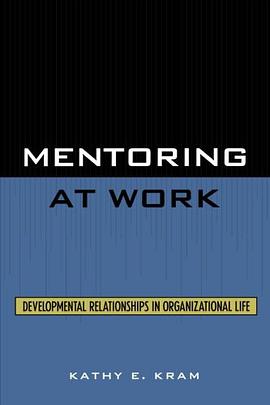
It was through control of the shattering of wild seeds that humans first domesticated plants. Now control over those very plants threatens to shatter the world's food supply, as loss of genetic diversity sets the stage for widespread hunger. Large-scale agriculture has come to favor uniformity in food crops. More than 7,000 U.S. apple varieties once grew in American orchards; 6,000 of them are no longer available. Every broccoli variety offered through seed catalogs in 1900 has now disappeared. As the international genetics supply industry absorbs seed companies—with nearly one thousand takeovers since 1970—this trend toward uniformity seems likely to continue; and as third world agriculture is brought in line with international business interests, the gene pools of humanity's most basic foods are threatened. The consequences are more than culinary. Without the genetic diversity from which farmers traditionally breed for resistance to diseases, crops are more susceptible to the spread of pestilence. Tragedies like the Irish Potato Famine may be thought of today as ancient history; yet the U.S. corn blight of 1970 shows that technologically based agribusiness is a breeding ground for disaster. Shattering reviews the development of genetic diversity over 10,000 years of human agriculture, then exposes its loss in our lifetime at the hands of political and economic forces. The possibility of crisis is real; this book shows that it may not be too late to avert it.
Table of Contents of Shattering
Origins of Agriculture
Development of Diversity
Value of Diversity
Genetic Erosion: Losing Diversity
Tropical Forests
Rise of the Genetics Supply Industry
Enter Biotechnology
Global Conservation Begins
Politics of Genetic Resource Control
Responsibility and Commitment
Quotes from Shattering
"Loss of genetic diversity in agriculture is leading us to a rendezvous with extinction--to the doorstep of hunger on a scale we refuse to imagine. To simplify the environment as we have done with agriculture is to destroy the complex interrelationships that hold the natural world together. Reducing the diversity of life, we narrow our options for the future and render our own survival more precarious."
"The plant epidemics of the early 1970s served to underline a simple but humbling point: although the North is grain-rich, it is gene-poor. Maximum genetic diversity is found in the tropical latitudes. While the vegetative assets of the temperate zones were literally frozen during the ice ages, botanical diversity flourished in the warmer tropics."
"As the mid-1970s were reached, three-quarters of Europe's traditional vegetable seed stood on the verge of extinction. By that time scientists were beginning to scrape the bottom of the barrel--in this case the gene pool--in search of genetic resistance to an ever growing list of virulent diseases and menacing pests attacking the world's most important crops. Although modern breeding had led to a green revolution in the North and a massive boom in yield, it had also eroded the genetic base for future breeding. We built our roof with stones from the foundation."
"By the late 1980s, the struggle for control of breeding material--seeds, and the genes inside them--has become intensely economic and political. Both nations and companies now vie for access to and benefits from the world's germplasm."*
. . .
"In two decades that Vavilov was scouring the countryside, his team added a quarter of a million entries to Soviet seed collections. No country since has come close to duplicating this feat. He combed the Middle East, Afghanistan, and Ethiopia for primitive wheat varieties. He journeyed to North and South America and to the Far East. But more importantly than traveling and collecting widely, he began to notice a pattern.
"Genetic variation--the diversity created by thousands of years of agriculture--was not equally distributed around the globe. In a small, isolated pocket on the Ethiopian plateau, Vavilov found hundreds of endemic varieties of ancient wheat. Studying other crops, he found some regions blessed with astonishing diversity, while other areas were relatively impoverished. In the following years, observations by other scientists confirmed Vavilov's budding theory. While living in a suburb of Guadalajara, Mexico, Edgar Anderson noted that he found 'more variation in the corn of this one little township than in all of the maize in the United States.'
"Vavilov mapped out the distribution of this diversity for each of the crops he studied. He reasoned that the degree of diversity was indicative of how long the crop had been grown in that area. The longer the crop had been grown, the more diversity it would display. . . . By locating a center of genetic diversity for a crop, one pinpointed its origin, Vavilov reasoned. This was where the crop had originated and had had time and opportunity to develop wide diversity. A plant's 'center of diversity' was thus its 'center of origin,' he said.
"With this insight, Vavilov was able to look back through the darkness of ancient history. Conventional wisdom had assumed that agriculture had arisen along the Tigris and Euphrates rivers. Vavilov was discovering otherwise. Diversity was concentrated 'in the strip between 20 degrees and 45 degrees north latitude, near the higher mountain ranges, the Himalayas, the Hindu Kush, those of the Near East, the Balkans, and the Appennines. In the Old World this strip follows the latitudes, while in the New World it runs longitudinally, in both cases conforming to the general direction of the great mountain ranges.' The mountains provided ideal conditions for the rise of diversity: varied topography, soil types, and climates. And they were excellent barriers to outside incursions and even local exchange, thereby sheltering their diversity."
"As Vavilov discovered what he thought to be the centers of origin for more and more crops, he noticed that they overlapped. The center for wheat is not the center of origin for wheat alone, for here a great diversity of barley, rye, lentils, figs, peas, flax, and other crops is also found. These crops share a common center of origin.
"Thus, Vavilov theorized that the world's crops had originated in eight definable centers of origin. It was in these centers--all located in Third World countries--that agriculture had originated, he suggested, and that the greatest genetic diversity was to be found. The eight centers were listed as follows: China; India, with a related center in Indo- Malaya; Central Asia; the Near East; the Mediterranean; Abyssinia (Ethopia); southern Mexico and Central America; and South America (Peru, Ecuador, and Bolivia), with two lesser centers--the island of Chiloe off the coast of southern Chile, and an eastern secondary center in Brazil and Paraguay. "
"The beauty, simplicity, and utility of Vavilov's theory of centers remain despite the enlargements and modifications that have been made by Harlan and others, If it does not always make sense to speak of centers of origin as Vavilov did, it is still essential to understand that crops have centers of diversity. (And for the crop evolutionist, this diversity remains a crucial clue in delving into the crop's origin.)
"It is crucial to understand that plant diversity is not spread evenly around the globe."
. . .
"Back in the early 1970s, a scientist from Purdue University made the journey to Ethiopia to gather sorghum. Some years later, we were told that he forwarded a copy of his laboratory analysis of the farmer cultivars to his Ethiopian hosts. According to the report, he had 'discovered' that one sorghum accession had a very high protein content and excellent baking qualities. He could have saved himself some laboratory time had it occurred to him to ask the farmer who first gave him the seed about its characteristics. Ethiopians call their variety sinde lemine, which translates as 'why bother with wheat?'
"When Yilma Kebede tells the story, he literally shakes with laughter. Lounging with one leg stretched out on an office sofa, Dr. Yilma talks of another high-lysine sorghum, the name for which is 'milk in my cheeks.' As team leader for sorghum breeding at the research institute in Nazret, Yilma has developed a healthy respect for Ethiopian farmers and their contribution to sorghum. His natural easy-going style left him though, when he recalled an earlier visit from Ciba-Geigy officials who tried to sell hybrid grain sorghum to his government. 'It is ours,' he told us. 'Sorghum originated here in Ethiopia.'
Across the room, Yilma's colleague, Dr. Melaku Worede, shares both his irritation and his solutions. Melaku is charged with one of the toughest and most important jobs in the world. He is the director of the Plant Genetic Resources Center, the genetic conservation campaign for Ethiopia.
"In and of itself Ethiopia could be regarded as a Vavilov center. Its fantastic terrain of mountains, valleys and plateaus, combined with a long history of cultivation, make the country one of the most botanically diverse and important points on the globe. Ethiopia is home to major world crops like sorghum and many millets, as well as coffee. Less well-known outside the country is its teff crop, which is still the most important food staple. Thousands of years of farming have made the region a secondary center of diversity for wheat and barley as well.
"But Melaku Worede stresses that his country's ragged landscape is only part of the story. The other part is its people. 'A farmer will take me to his bin and I will look in at the barley or teff or sorghum and I will see nothing. To me, it looks the same.' Melaku waves his arm. 'But the farmer will just reach in and show me that this one is for this soil and this one is for that and this one makes good injura [Ethiopian bread made with fermented dough] and so on. I am the scientist with the training. But farmer knows his seed.' "
具體描述
讀後感
評分
評分
評分
評分
用戶評價
相關圖書
本站所有內容均為互聯網搜索引擎提供的公開搜索信息,本站不存儲任何數據與內容,任何內容與數據均與本站無關,如有需要請聯繫相關搜索引擎包括但不限於百度,google,bing,sogou 等
© 2025 qciss.net All Rights Reserved. 小哈圖書下載中心 版权所有





















